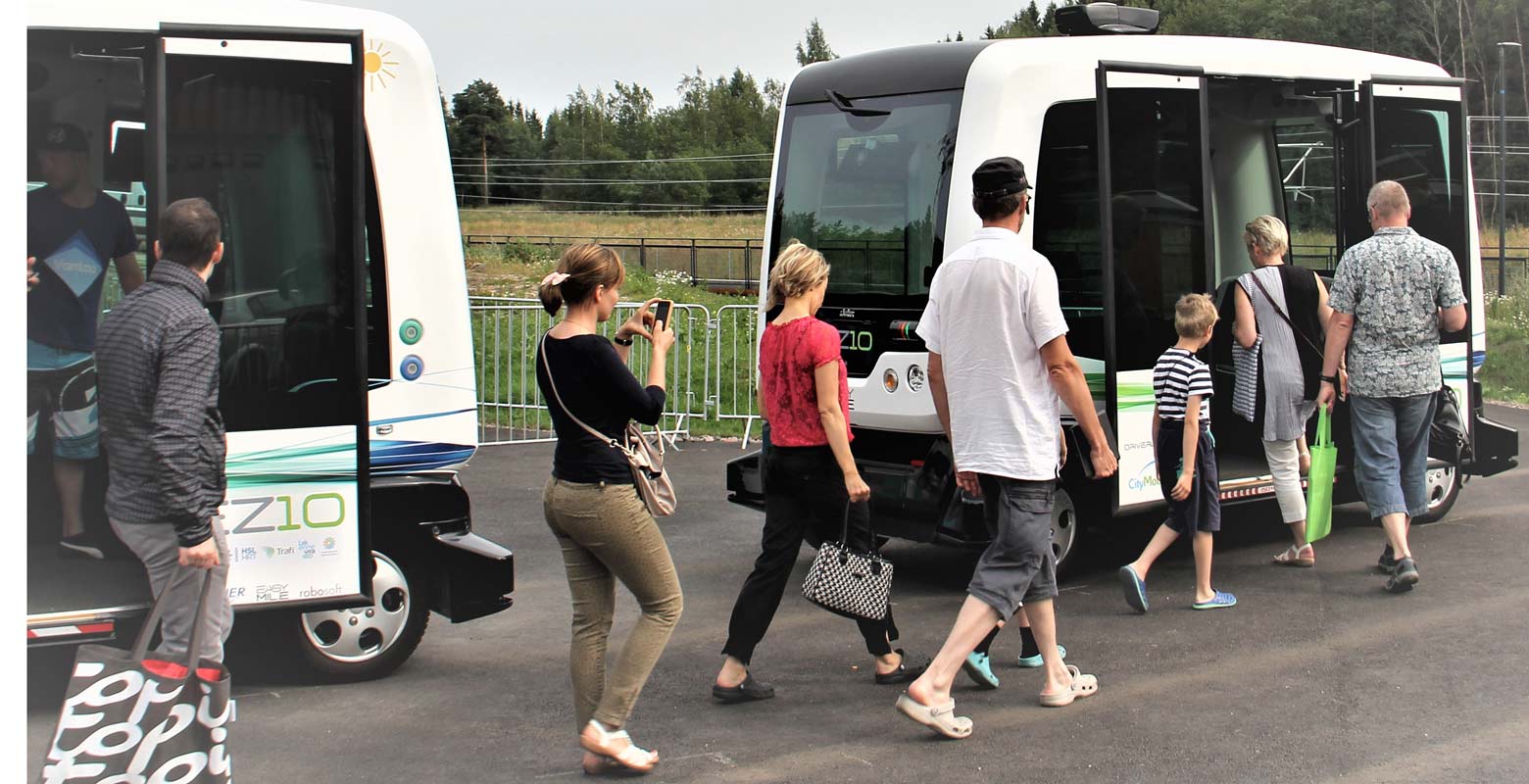The survey was conducted as part of the joint MaaS (Mobility as a Service) research project, financed by the Finnish Ministry of Transport and Communications, the Finnish Transport Safety Agency Trafi, the Finnish Transport Agency and Metropolia University of Applied Sciences. Arto O. Salonen, Research Director at the Metropolia University of Applied Sciences and Docent at the University of Helsinki, oversaw the project.
Finland is at the forefront of research in autonomous buses - driverless buses considered reliable
Published 17.11.2017
There is great global interest in autonomous vehicles as a future means of transport. However, up until now there has been no available research data on user experiences. The first survey on passenger experiences of robot buses was published on 6 November 2017 in the renowned journal, Transport Policy.

Regarding traffic safety, the driverless buses were perceived reliable
The research project involved the interviewing of 197 passengers riding on a driverless shuttle bus operating on a one-kilometre stretch between the Kivistö railway station and the Housing Fair in the City of Vantaa. The passengers perceived traffic safety to be better in the driverless shuttle bus than in a conventional bus with a driver in similar circumstances.
“We asked the passengers to compare their experience of travelling on a robot bus to that of travelling on a conventional bus. We were interested in traffic safety, personal in-vehicle security and the passengers’ possibilities to act in case of an emergency”, says Arto O. Salonen.
“The passengers’ assessed perception of traffic safety was better with the driverless shuttle bus than with a conventional bus in similar circumstances. On the other hand, the sense of in-vehicle security was not as good with the driverless shuttle bus as with a conventional bus. This was especially the case with female passengers. Considering emergency management, there were no significant differences between the types of buses.
In Finland, more than 200 road traffic fatalities occur every year. Traffic safety considerations facilitate the mainstreaming of the use of driverless shuttle buses, but female passengers’ sense of security on-board is diminished when a human driver is not present.
“The sense of personal safety can be improved. After all, we have got used to lifts operating without personnel”, says Arto O. Salonen.
Read the whole report: "Passenger's subjective traffic safety, in-vehicle security and emergency management in the driverless shuttle bus in Finland"
Inquiries
Metropolia University of Applied Sciences: Arto O. Salonen, phone +358 40 334 5993, arto.salonen(at)metropolia.fi
Ministry of Transport and Communications: Senior Engineer Maria Rautavirta, phone +358 295 34 2564, firstname.lastname(at)lvm.fi
Finnish Transport Agency: Leading ITS Specialist Risto Kulmala, phone +358 29 534 3872, firstname.lastname(at)fta.fi
Finnish Transport Safety Agency Trafi
Leading Specialist Sami Mynttinen, phone +358 29 5345 555, firstname.lastname(at)fta.fi
This is an old article. It may contain deprecated information and the links may not work. Our publications can be found in the Doria publication archive
